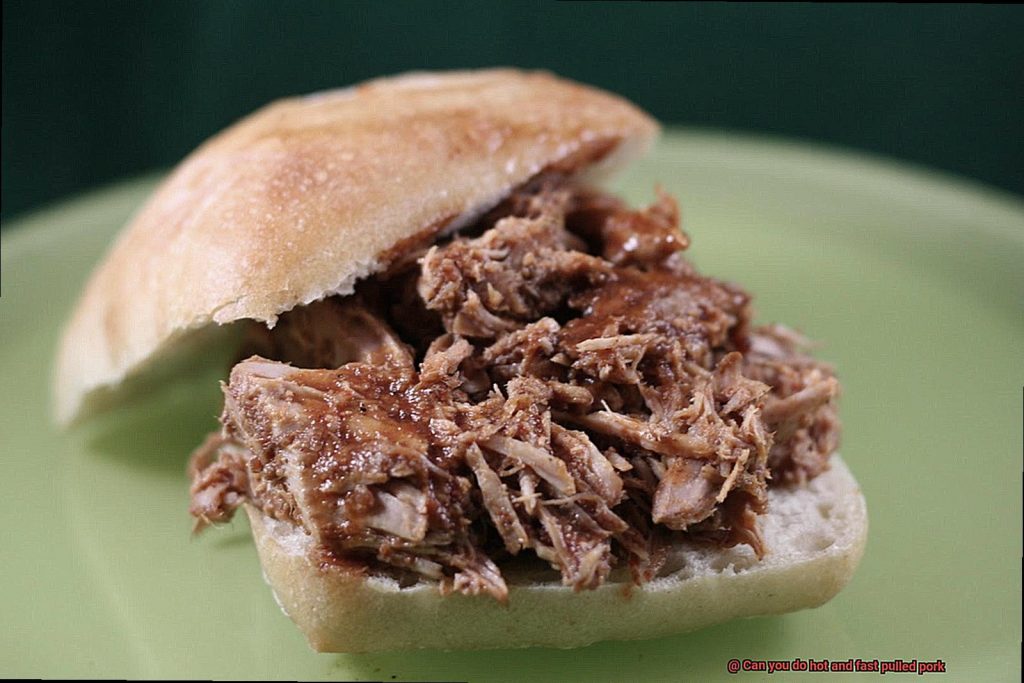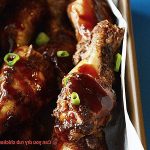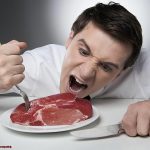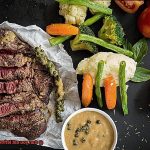Tired of spending hours slaving over slow-cooked pulled pork, only to end up craving a faster, tastier bite? Well, get ready for some game-changing news. Today, we’re diving headfirst into the tantalizing world of hot and fast pulled pork – a technique that’ll rock your barbecue world.
When you think of pulled pork, you probably imagine low and slow cooking. It’s all about patience and tenderizing those tough cuts until they melt in your mouth. But what if we told you there’s a way to achieve succulent, caramelized perfection in a fraction of the time?
Enter hot and fast cooking – a method that sparks heated debates among BBQ enthusiasts. Some swear by it while others remain skeptical. But guess what? We’re here to explore this technique, break it down step by step, bust those myths, and help you decide if hot and fast pulled pork is worth a shot.
If you’re ready to break free from tradition and embark on a flavor-packed adventure, buckle up because we’re taking you on a journey to BBQ nirvana. From choosing the right cut to mastering high heat cooking, we’ve got all the insider knowledge you need to produce mind-blowing pulled pork that’ll make your taste buds dance with joy.
But before we dive in deep, let’s uncover the essentials of this hot and fast approach – challenging the status quo and proving that slow and steady isn’t always the only path to barbecue bliss. So grab yourself an ice-cold beverage, fire up that grill, and get ready for a revolution in the world of pulled pork – hot and fast style.
Contents
What is Hot and Fast Pulled Pork?
Look no further than hot and fast pulled pork. This revolutionary cooking method allows you to achieve succulent and flavorful results in a fraction of the time compared to traditional low and slow methods. In this comprehensive guide, we will delve into the intricacies of hot and fast pulled pork, including the cooking process, essential tips for success, and mouthwatering serving suggestions that will leave your taste buds dancing.
The Cooking Process:
Hot and fast pulled pork is all about striking the perfect balance between heat and time. Unlike the slow and leisurely low and slow method, this technique involves cooking the meat at higher temperatures, typically ranging from 300-325°F (149-163°C), for a shorter duration of around 4-6 hours. By cranking up the heat, you expedite the breakdown of collagen in the meat, resulting in tender, juicy, and flavor-packed pulled pork. The key lies in selecting the right cut of meat, such as pork shoulder or Boston butt, which boasts marbling and connective tissue that contribute to moist and delicious results.
Tips for Success:
To ensure your hot and fast pulled pork dazzles your taste buds every time, here are some indispensable tips to bear in mind:
- Seasoning: Elevate your flavor game by applying a dry rub or marinade to the meat. Whether it’s a tantalizing blend of paprika, brown sugar, garlic powder, or a secret family recipe, let it work its magic by allowing it to penetrate for at least an hour or preferably overnight.
- Temperature Control: Maintain a steady temperature between 300-325°F (149-163°C) throughout the cooking process. Investing in a reliable smoker or grill with good temperature control is crucial for achieving consistent results.
- Monitoring Internal Temperature: Keep a close eye on the internal temperature of the pork using a trusty meat thermometer. The meat is perfectly done when it reaches a range of 195-205°F (90-96°C), ensuring unrivaled tenderness.
- Resting Period: Grant your masterpiece a well-deserved rest for about 20-30 minutes before shredding. This crucial step allows the juices to redistribute throughout the meat, resulting in an even more succulent final product that will have your guests swooning.
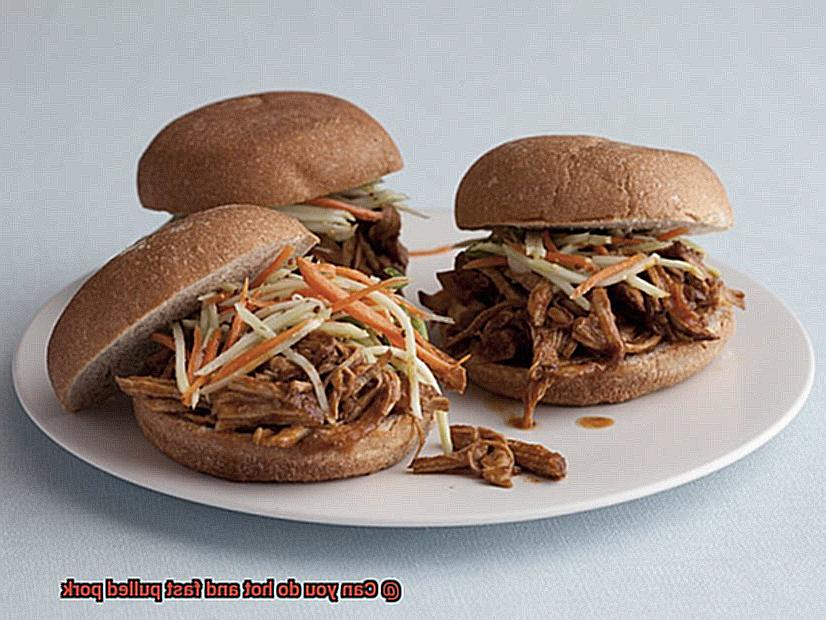
Serving Suggestions:
With your hot and fast pulled pork triumphantly ready, prepare for a symphony of flavors and endless culinary possibilities. Here are some delectable serving suggestions to ignite your imagination:
- Pulled Pork Sandwich: Create a tantalizing masterpiece by piling your succulent pulled pork onto a soft bun and topping it with your favorite barbecue sauce, crunchy coleslaw, and tangy pickles for the ultimate flavor explosion.
- Pulled Pork Tacos: Embark on a flavor-packed journey by filling tortillas with your divine pulled pork and adding vibrant toppings such as zesty salsa, creamy avocado, and fresh cilantro for an unforgettable twist on traditional tacos.
- Pulled Pork Salad: Delight in a healthy and satisfying feast by adding your tender pulled pork to a bed of crisp greens, along with an array of colorful vegetables, cheese, and dressing for a mouthwatering salad that will leave you feeling nourished and content.
The Pros and Cons of Hot and Fast Pulled Pork
Then hot and fast cooking might be the method for you. Instead of the traditional low and slow approach, hot and fast cooking involves higher temperatures for a shorter period of time. Let’s dive in and explore the pros and cons of this technique.
Pros:
- Reduced cooking time: Say goodbye to the long wait. With hot and fast pulled pork, you can have tender and juicy meat in just 4-6 hours instead of the usual 10-14 hours. Perfect for those who want to enjoy their favorite BBQ dish without the lengthy cooking process.
- Crispy bark: Hot and fast cooking allows you to achieve a crispy bark on the outside of the pork while maintaining a tender and juicy interior. The higher temperatures promote caramelization of the rub’s sugars, resulting in a flavorful crust that will leave you craving more.
- Fuel efficiency: Save on fuel costs and reduce your carbon footprint. Hot and fast cooking requires less fuel or energy consumption compared to low and slow methods. You can enjoy delicious pulled pork while being environmentally conscious.
Cons:
- Tenderness: Hot and fast cooking doesn’t give the pork as much time to break down collagen and connective tissues, which create that melt-in-your-mouth texture in traditional low and slow pulled pork. As a result, the meat may not be as tender and may require additional seasoning or sauces to compensate.
- Smoky flavor: If you’re a fan of a strong smoky taste, hot and fast methods may not deliver. The shorter cooking time doesn’t allow for as much smoke absorption, resulting in a milder smoky flavor compared to slower methods.
- Careful monitoring required: Hot and fast cooking requires careful temperature and timing monitoring to prevent overcooking or drying out the meat. The higher temperatures can easily cause the meat to dry out if not properly managed, so keep a close eye on your grill or smoker.
- Not suitable for larger cuts: Hot and fast cooking may not be ideal for larger cuts of pork or whole hogs. These cuts require more time to cook thoroughly and evenly. It is generally more suitable for smaller cuts like pork shoulder or pork butt.
Choosing the Right Cut of Meat
The secret ingredient lies in one simple decision: choosing the right cut of meat. And trust me, it matters. Here’s why:
- The Shoulder Showdown: When it comes to pulled pork, the Boston butt and picnic roast are the heavyweight contenders. These cuts hail from the upper part of the pig’s shoulder, boasting abundant marbling and connective tissue that keep the meat tender and juicy throughout cooking.
- Fat is Your Flavorful Friend: The Boston butt is a favorite among barbecue aficionados for a reason. With its perfect balance of fat marbling, it injects unparalleled flavor and moisture into your pulled pork. If you’re seeking something slightly leaner, the picnic roast is an excellent choice.
- To Bone or Not to Bone: Some cuts come with a bone, enhancing the meat’s succulence and taste. But don’t fret, boneless options are available too if you crave convenience or effortless shredding.
- Beyond Shoulder Cuts: While traditionalists swear by pork shoulder cuts, don’t shy away from exploring other tantalizing options. Pork loin, pork belly, or even beef brisket can deliver equally superb results when cooked with finesse. Just remember that different cuts demand distinct cooking techniques and times.
When selecting your cut of meat, consider factors such as personal preference, budget, and availability. If you yearn for that classic pulled pork tenderness and juiciness, opt for the Boston butt or picnic roast. Want to dabble in leaner alternatives or experiment with diverse flavors? Give pork loin or alternative cuts a whirl.
Seasoning and Preparing the Meat
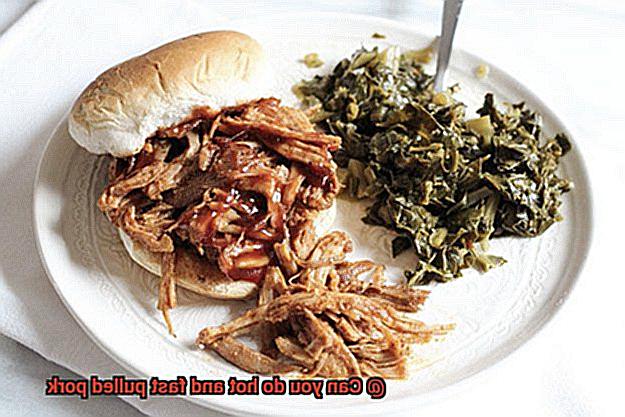
Prepare to embark on a culinary journey into the realm of hot and fast pulled pork, where the magic lies in the seasoning and preparation of the meat. Get ready to tantalize your taste buds and elevate your barbecuing game to new heights. Let’s dive in.
Choosing the Right Seasonings:
When it comes to seasoning pulled pork, two tantalizing options await: dry rubs and wet marinades. Let your taste buds guide you as you explore a world of spices and herbs. For a dry rub, combine paprika, brown sugar, chili powder, garlic powder, onion powder, salt, and pepper to create an irresistible crust. Alternatively, whip up a wet marinade using apple cider vinegar, Worcestershire sauce, soy sauce, brown sugar, mustard, and spices. Both methods infuse the meat with an explosion of flavors.
Allowing Time for Flavors to Develop:
Once you’ve perfected your seasoning technique, patience becomes your secret weapon. Don’t rush into cooking. Allow the meat to marinate for at least 30 minutes before it hits the grill. This crucial step allows the seasonings to work their magic and penetrate deep into the meat fibers, resulting in mouthwatering bites of pure deliciousness.
Mastering Hot and Fast Cooking:
Hot and fast cooking is an art that ensures tender pulled pork without spending hours tending to low heat. Preheat your grill or smoker to the perfect temperature and keep a watchful eye on it. Aim for an internal temperature of 195-205°F (90-96°C), checking with a trusty meat thermometer. As soon as it reaches perfection, remove it from the heat and let it rest for a few minutes before shredding.
The Importance of Resting:
Resting is often overlooked but is equally vital in the process of seasoning and preparing meat. Giving your pulled pork a chance to rest allows the juices to redistribute, resulting in a more succulent and flavorful final product. Patience truly pays off, my grilling friends.
Maintaining a Consistent Temperature
Maintaining a consistent temperature is crucial in various aspects of life, from cooking to climate control. Whether you’re grilling hot and fast pulled pork or keeping your home at a comfortable temperature, the key to success lies in achieving and maintaining a consistent temperature.
When it comes to grilling hot and fast pulled pork, there are several factors to consider in order to maintain a consistent temperature and achieve that tender and juicy result. Here are some tips to help you master the art of temperature control:
- Invest in quality equipment: A high-quality smoker or grill with good insulation is essential for maintaining a consistent temperature. Look for one that can reach high temperatures and retain heat effectively.
- Use a reliable thermometer: Monitoring the internal temperature of your meat is crucial for maintaining consistency. Invest in a reliable meat thermometer and place it in the thickest part of the pork shoulder. Regularly check the internal temperature throughout the cooking process and make adjustments as necessary.
- Control airflow: Proper airflow is vital for even heat distribution and preventing hot spots. Ensure that your smoker or grill has adjustable vents that allow you to regulate the flow of air. Experiment with different vent settings to find the right balance for maintaining a consistent temperature.
- Manage fuel levels: Keep an eye on your fuel levels, whether it’s charcoal or propane. Add more fuel as needed to maintain a steady heat or ensure your propane tank is full and functioning properly.
- Minimize lid openings: Opening the lid too frequently can cause temperature fluctuations. Resist the urge to peek too often and let your pork cook undisturbed.
- Soak wood chips: If you’re using wood chips for smoke flavor, soak them in water before adding them to your grill or smoker. This prevents them from burning too quickly and causing temperature spikes.
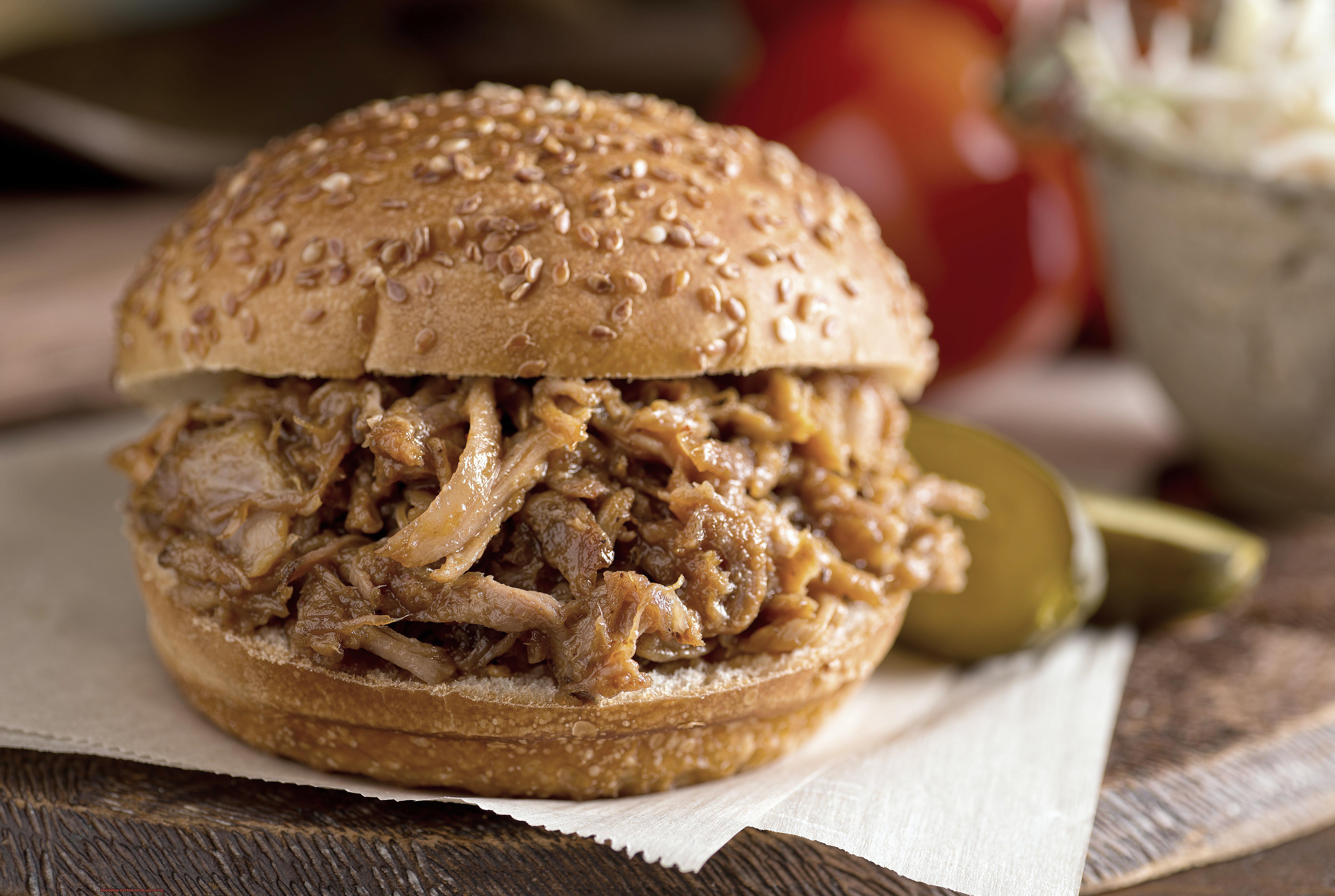
In addition to these tips, practice and patience are key when it comes to maintaining a consistent temperature while grilling hot and fast pulled pork. It may take some trial and error to find the right temperature and cooking time that works best for your equipment and preferences. Don’t be discouraged if your first attempts don’t turn out perfectly – keep experimenting, adjusting, and honing your skills until you achieve the perfect balance of temperature and flavor.
Beyond grilling, maintaining a consistent temperature is also important in other areas of life. In climate control, for example, it ensures comfort and energy efficiency. Proper insulation, regular maintenance of HVAC systems, and the use of programmable thermostats are all key factors in maintaining a consistent temperature in your home or workplace.
Cooking Time and Internal Temperature
Embark on a culinary adventure and become a pulled pork aficionado as we explore the intricate world of cooking time and internal temperature. These two essential factors are the secrets to crafting a mouthwatering pulled pork dish that is not only delicious but safe to eat.
Cooking Time:
- Slow and Steady Wins the Race: Delve into the realm of traditional slow-cooking methods, such as smoking or using a slow cooker, renowned for their ability to create tender and flavorful pulled pork. These techniques employ low temperatures over an extended period, allowing the connective tissues in the meat to gradually break down.
- Embrace the Hot and Fast Trend: For those who simply can’t wait to sink their teeth into succulent pulled pork, the hot and fast method offers a quicker alternative. By cooking the meat at higher temperatures for a shorter duration, you can achieve similar mouthwatering results in just 4-6 hours.
Internal Temperature:
- Safety First: Prioritize food safety by monitoring the internal temperature of your pulled pork. According to food safety guidelines, pork should reach an internal temperature of 145°F (63°C) with a three-minute rest time before serving to ensure it is safe to consume.
- Texture is Everything: While 145°F may be the minimum safe temperature, most chefs recommend cooking pulled pork to a higher internal temperature for optimal texture and tenderness. Aim for around 195°F (90°C) or slightly higher for a melt-in-your-mouth experience.
Tips for Success:
- Embrace Your Meat Thermometer: Invest in a reliable meat thermometer as your trusty companion throughout the cooking process. Accurate temperature measurement at different stages ensures your pulled pork is cooked to perfection without any guesswork.
- Quality Matters: Remember that the type and quality of meat can influence cooking time and internal temperature. Choose a well-marbled cut and adjust your cooking time accordingly to achieve the best results.
Texture and Flavor Differences between Low and Slow vs Hot and Fast Pulled Pork
Strap on your aprons, because we’re about to embark on a culinary adventure that will have you grilling up a storm.
Let’s talk texture. Low and slow cooking is the traditional method for achieving that melt-in-your-mouth consistency we all crave. Picture this: tender shreds of pork that practically dissolve on your tongue. The secret lies in the slow breakdown of connective tissues, like collagen, over hours and hours of cooking at a low temperature, usually around 225°F. This gradual breakdown transforms those tough tissues into gelatin, adding richness and moisture to your meat.
But hold on, hot and fast enthusiasts are not going down without a fight. While low and slow may reign supreme in tenderness, hot and fast can still deliver some serious flavor. With higher temperatures above 300°F and shorter cooking times of around 4 to 6 hours, this method offers a slightly firmer texture that some folks prefer. It may not have the same melt-in-your-mouth consistency, but hey, different strokes for different folks, right?
When it comes to flavor, low and slow cooking gives flavors time to develop and meld together in perfect harmony. The extended cooking time allows the smoky goodness from wood chips or charcoal to infuse into every fiber of the meat. Think deep, rich flavors that scream traditional barbecue.
On the other hand, hot and fast pulled pork may not have as pronounced of a smoky taste but can still pack a flavorful punch. With less exposure to smoke due to shorter cooking times, the flavor profile might be slightly milder. But fear not. Dry rubs or marinades can step up to the plate and add their own delicious flair.
Here’s the bottom line: it all comes down to personal preference. Some may argue that low and slow is the only way to achieve true barbecue bliss, while others swear by the faster, hotter method. The choice is yours, my grilling comrades.
Tips for Successful Hot and Fast Pulled Pork
Hot and fast pulled pork is a grilling technique that allows you to enjoy tender and flavorful pork in a fraction of the time. By following these tips, you can ensure that your hot and fast pulled pork is a success.
First and foremost, choosing the right cut of meat is crucial for hot and fast pulled pork. Look for a pork shoulder or Boston butt that has a good amount of marbling and fat. This fat will keep the meat moist during the cooking process, resulting in juicy pulled pork. Trim off any excess fat on the surface, but leave a thin layer to enhance flavor and prevent drying out.
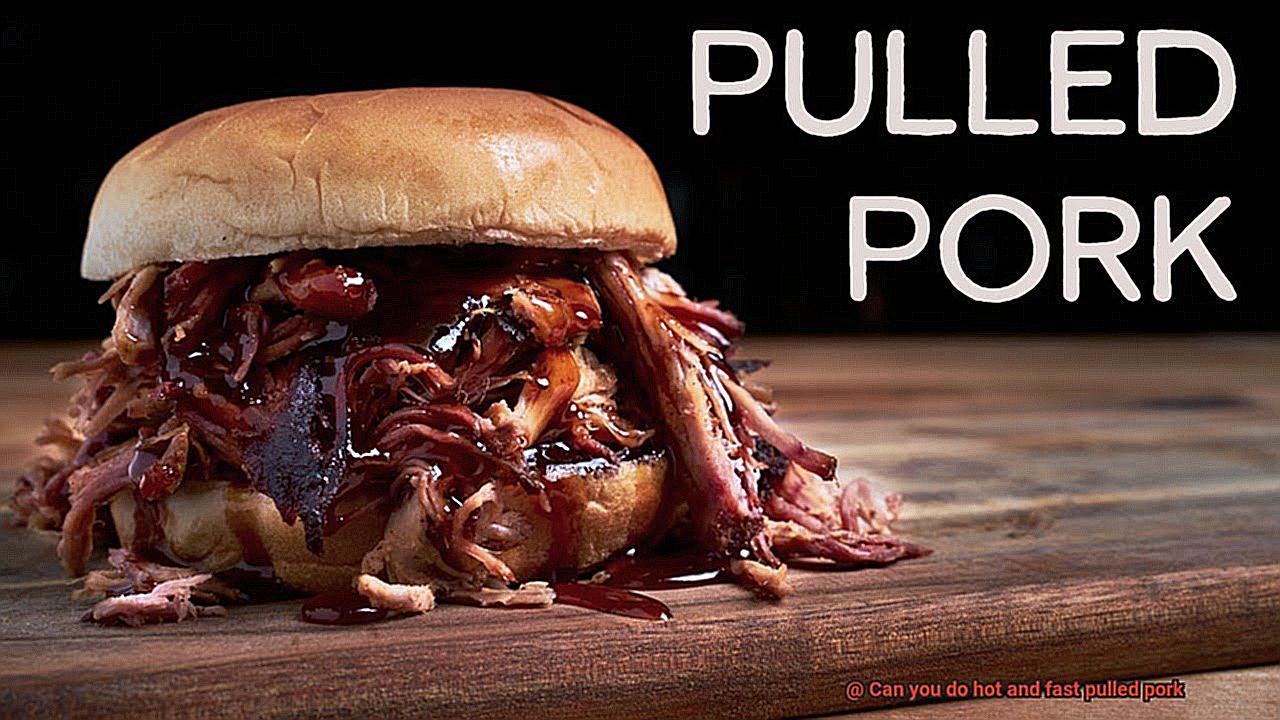
Before cooking, it’s important to season the pork properly. Create a dry rub using a combination of salt, pepper, paprika, brown sugar, garlic powder, and any other spices you prefer. Generously apply the rub all over the pork, making sure to massage it into every nook and cranny. This will add flavor to every bite of your pulled pork.
Preheating your grill or smoker is crucial for hot and fast pulled pork. Aim for a temperature between 300-325°F (150-163°C). This high heat helps sear the outside of the meat quickly, creating a nice caramelized crust. It also helps render some of the fat, resulting in juicy and flavorful pulled pork.
Maintaining consistent heat throughout the cooking process is essential. Avoid frequently opening the grill lid, as this can cause temperature fluctuations and extend the cooking time. Instead, trust the process and allow the pork to cook undisturbed until it reaches the desired internal temperature.
When it comes to cooking time, hot and fast pulled pork typically takes around 4-5 hours, depending on the size of the cut. Use a meat thermometer to ensure that the internal temperature reaches at least 195°F (90°C) for optimal tenderness. Insert the thermometer into the thickest part of the meat without touching bone or fat.
Resting the cooked pork is just as crucial as cooking it. Once the pork reaches the desired temperature, remove it from the grill and let it rest for about 30 minutes. This allows the juices to redistribute throughout the meat, resulting in a moist, tender, and flavorful end product.
After resting, it’s time to pull the pork. Using two forks or meat shredders, gently pull apart the meat, discarding any excess fat or bone. The pulled pork can then be served as is or mixed with your favorite barbecue sauce for added flavor.
FY837Itnzgg” >
Conclusion
Yes, you can absolutely do hot and fast pulled pork. Contrary to popular belief, you don’t always need to spend hours upon hours slow-cooking your pork to achieve tender and flavorful results. By using a higher cooking temperature and reducing the overall cooking time, you can still create mouthwatering pulled pork in a fraction of the time.
The key to successful hot and fast pulled pork lies in properly seasoning and preparing your meat. Start by generously applying your favorite dry rub or marinade, ensuring that every inch of the pork is coated with delicious flavors. Let it sit for a while to allow the seasonings to penetrate the meat.
When it’s time to cook, preheat your grill or smoker to around 300-325°F (150-163°C). This higher temperature will help break down the connective tissues in the meat more quickly, resulting in tender pulled pork. Place the seasoned pork on the grates and let it cook for approximately 2-3 hours, depending on the size of your cut.
During this time, resist the urge to constantly check or flip the meat. Allow it to develop a beautiful crust on the outside while it cooks through internally. The caramelization that occurs at this higher temperature will add an incredible depth of flavor to your pulled pork.
Once your internal temperature reaches around 195-205°F (90-96°C), it’s time to remove the pork from heat. Carefully wrap it in foil and let it rest for about 30 minutes before shredding. This resting period allows for any remaining moisture in the meat to redistribute evenly, ensuring juicy and succulent pulled pork.
When you’re ready, grab two forks or some bear paws and start pulling apart that tender meat. The result? A pile of smoky, flavorful goodness that is perfect for sandwiches, tacos, or simply enjoying on its own.
So don’t be afraid to try hot and fast pulled pork. With the right technique and a little bit of patience, you can achieve incredible results in a fraction of the time.

